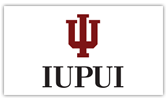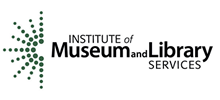Getting Started
Shaping Outcomes can be taught as a stand-alone course or as an embedded course in another class. Although the simulations or case studies are specific to museums and libraries, the concepts, structured methods, and practice of outcomes-based planning and evaluation are valuable tools for students and faculty in a variety of disciplines in the arts and humanities, social sciences, or sciences.
If you are interested in teaching a stand-alone or embedded Shaping Outcomes course, contact Dr. Rachel Applegate at rapplega@iupui.edu.
If you have already arranged to teach Shaping Outcomes, the best way to prepare for teaching is to work through the course yourself beforehand, using the practice scenario examples, library examples, or museum examples, depending upon your expertise and professional environment.
To help instructors and participants get started, Shaping Outcomes includes several useful tools:
- Includes an overview of the course and other important resources/concepts.
- A clickable table of contents provides a detailed list of handouts, help guides and a variety of useful resources.
- Everything you need to know about how the course works!
- This orientation provides details about the course's design, layout, menu options, navigation buttons, museum examples, library examples, and more.
- Logic models visually represent or diagram a program.
- A logic model shows program planning details, and the relationships between audience need, program activities, expected outcomes or results, and how those results will be evaluated.
- A sample logic model is included in the course to show what a complete program design looks like.
Case Studies for libraries OR museums
- Library and museum case studies include examples of real outcomes-based programs.
- Cases are attached to the course as PDF files. Cases are referred to as 'small', 'medium' or 'large' depending on the size of the lead institution in the case study program.
- Learners can decide whether their own organization best matches the 'small', 'medium', or 'large' examples, and then use those that fit best.
- Attached to the case studies are materials about the case organization such as evaluation studies, grant proposals, reports and other materials.
- You can use these to generate discussion among class participants and to help learners better understand how OPBE is applied in-context.
- Includes definitions and descriptions of key terminology and concepts in OBPE. Also includes examples of how terms might be seen in other disciplines or contexts.
- Use the tools above to introduce yourself to the Shaping Outcomes course and OBPE process. Also pass these resources along to participants in your session!




